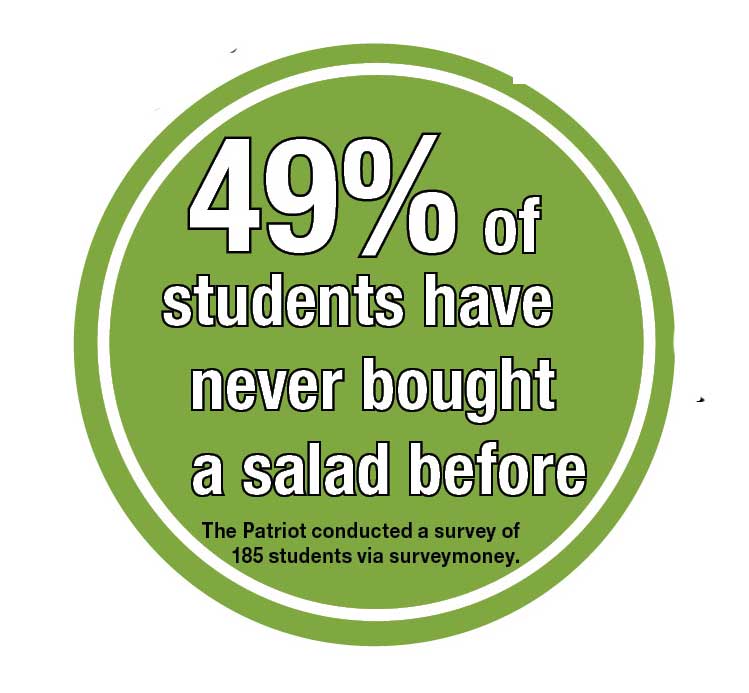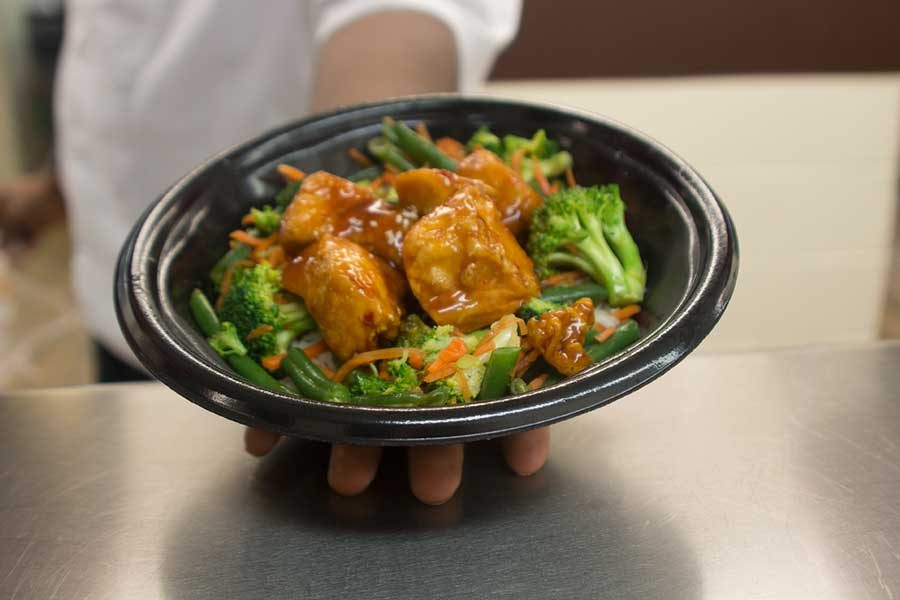Grab and go
From chicken to sushi, the cafeteria offers a wide variety of foods that appeal to a variety of cultures
Asian stir-fry is one of the various new dishes the cafeteria serves for lunch to cater to the various cultures of the student body. The cafeteria is finding new ways to incorporate the represented cultures into the menu.
At 3:20 on April 22, a member of The Patriot staff went down to get one of the cafeteria’s newest items, Japanese soda, only to find them completely sold out. These sodas are part of the cafeteria’s latest decision to embrace the diverse culture at JC and to make the international students feel more at home. Their quick sellout is indicative of JC’s eagerness to embrace new international food options.
The cafeteria has been making a renewed effort to appeal to all of the food cultures at JC, including the international students. “I want to appeal to not only the American students, but also the Japanese and other international students,” Chef Manager Charlie Ware said.
Ware states that he goes out to the Asian market to get many of the ingredients for these foods to make it as authentic as possible. According to senior Lily Liu,“They are not as good as the authentic chinese food, but they are getting close.”
Chinese teacher Jie Liang is excited about the international options as well. On April 19, she sent out a faculty-wide email that read “The beef noodle soup made me feel I was back home in China! So delicious! If you haven’t had lunch, please go get the beef noodle soup!”
Despite the enthusiasm, some international students worry that American students won’t like or want to try the food. “I am kind of afraid that Americans don’t like authentic international foods,” senior Min Kim said.
However, Kim hopes the school continues to provide these diverse options. “Food is an easy and fun way to experience diversity and different cultures! I actually want to invite Americans to try Korean foods, which are unique and less familiar to them,” Kim said.
Cafeteria cashier Tammy Radke also says that she has seen students and faculty lean towards the international foods the cafeteria has begun to provide. “A majority like the cultural meals – the Asians loved the sushi bar and a lot of students thought it was awesome,” Radke said.
 There are two distinct food “cultures” within the American culture at JC as well. The distinction between healthy eaters and fast food lovers.
There are two distinct food “cultures” within the American culture at JC as well. The distinction between healthy eaters and fast food lovers.
“I would say only about 30 percent of people [go the healthier mile] while 70 percent lean towards the grab and gos, because we like things fast so we can quickly go spend time with our friends on a lunch break,” Ware said of the food “cultures.”
Freshman Matthew Friar agrees with Ware’s observation of the “grab and go” phenomenon. “Convenience is a big selling point,” Friar said. Friar buys fries from the cafeteria at least three times a week, but he doesn’t buy the large lunches because they come “on a big plate that you can’t take anywhere.”
Radke also believes this. “Some popular foods kids always get are chicken tenders, fries, and tater tots. I think it’s because they’re always in a hurry and they can just grab and go – and also because they’re really good.”
In a poll conducted by The Patriot with 185 responses, 49 percent of students said they never buy salad. “It’s too much work. You have to go make it, and it’s on the other side [of the cafeteria line]. No one ever goes over there. It’s all by itself,” freshman Kevin Amos said. According to Amos, he would be more inclined to buy a salad if it was on the same side as the fries and other fast foods.
However, other students enjoy these salads and healthier options. “I like how they started having the roasted vegetables. It’s a healthier option versus just the fries and chicken,” junior Julianna Richard said.
According to Richard and freshman Grace Hollin, athletics are a major reason why they try to eat healthier. “Because I’m an athlete, I don’t want to eat all this junk food and then have a three-hour practice,” Richard said.
“Healthier foods make you feel not only better about yourself, but it also fills you better than the unhealthy food,” Hollin said.
With such diverse food preferences, cafeteria-student communication is critical. “Next year we should start a student committee with 10-15 students so we can hear your opinions and what you want. That way we could take your opinions and make them a reality,” Ware said.
In the Patriot’s poll, 83 percent of students said that the cafeteria has quality food. Despite the numerous food cultures, it appears that the cafeteria is appealing to most of them.
Pia Scotto is a Community Editor and Kelly Foulk is a News Editor for The Patriot and jcpatriot.com.



